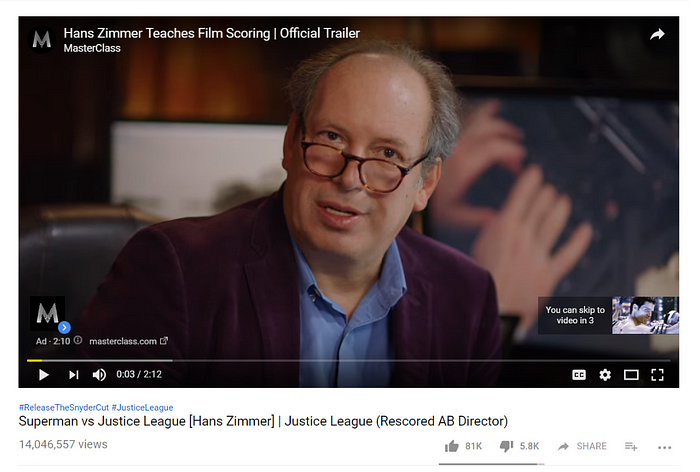Instream and Outstream Video Ads: What You Need to Know
A quick guide to two types of video ads that you’re probably most familiar with

In this digital era, the power of video advertising is genuinely fascinating. No other content engages and retains an audience like videos.
This type of content remains one of the most robust marketing tools when it comes to brand promotion and building awareness.
Video advertising comes in many different forms;
… you name it.
But, have you ever heard of instream and outstream video ads?
If you haven’t heard anything about them, you’re not alone.
More than two-thirds of popular brands worldwide have just discovered outstream ad formats in the last year.
That being said, those two not-so-familiar ad formats have actually earned overnight notoriety among big-name publishers and professional marketers.
I bet you’ve probably seen instream or outstream video ads before without realizing what you were looking at.
So, what actually are they, and what’s all the fuss about?
Let’s break them down.
What Is Instream Video Advertising?
Let’s say you’re playing your favorite YouTube playlist non-stop with your friends, then an ad just comes out of nowhere, breaking into your attention span and sometimes can be a bit distracting.
That’s what people are talking about when it comes to instream video ads.
By all means, an instream video ad is a type of video advertising that pops up when you’re watching a video on social media platforms.
Therefore, instream video ads involve standard pre-roll, mid-roll, or post-roll ad placements within your favorite videos.
Despite the bad rap it got for being too intrusive and annoying sometimes, instream video ads remain the most reliable and frequently used system for placing ads within a relevant video context.
The reason? That’s because the viewer has no choice but to watch it (before they can skip it).

So, it’s a great way to build a solid brand presence and create top-of-mind awareness.
Another reason why instream video ads are popular among marketers is that it makes it easier for them to place the ads in relevant online videos.
It matches the look and feels of the surrounding content your target viewers are about to enjoy on a platform.
However, with a lot of ad blockers out there, it might be getting more challenging to grab your audience’s attention right away.
Also, there needs to be some caution in the placement of outstream video ads and the creative strategy used.
An intrusive and boring instream video ad will give a bad impression and create a bad reputation for your company.
What Is Outstream Video Advertising?
Meanwhile, outstream video advertising focuses on promoting videos outside social media or video platforms.
It appears in a non-video environment.
And you have to know that outstream video advertising is taking center stage.
Have you ever visited a news site (CNN, NBC, BBC, etc.), and a video plays as you scroll down the page reading an article? That’s outstream video advertising.
This type of video advertisement is more organic than an instream video. They will pause streaming when the user scrolls past them and then replay again when the video is scrolled over and back to the video ad region.
More often than not, the video will reappear several times to ensure viewers don’t miss an opportunity to see it.
It makes your videos more stand out as it rolls against a static text-based content or backdrop.
However, the pitfall here is that it is easily negligible since it’s easy for the viewer to skip it. All they need is just to scroll past them.
Not to mention that you also need to be careful as outstream video ads have a high risk of advertising scams.
There are not yet sufficient defenses in place to protect marketers from dishonest publishers.
Instream and Outstream Video Ads: Which One Is Right For You?
Both instream and outstream video ads have their own advantages and disadvantages.
When they are both created and done right, they will undoubtedly clear a path toward a steady revenue stream for publishers of all sizes.
At this point, you must be wondering,
“Which type should I choose for my next video marketing campaign?”
It all depends on your goals and the way your target audience consumes videos.
Instream video ads are a great way to expand your reach since they can be placed on popular social media platforms like YouTube or Facebook with millions of active users who watch billions of videos each day.
On the other hand, outstream video ads are an ideal type if you want to strengthen your brand’s online presence while specifically targeting mobile users.
More than 60% of brands say that outstream video ads work better for mobile compared to instream ones.
Explainer Videos in Video Advertising
Whether you’re going to go for instream video ads or outstream video ads, an explainer video is a high-performance video that delivers your brand message more effectively in no minute.
This engaging type of video is well-known for its capability in breaking down complex topics so the viewer can easily digest the information.
Using explainer videos as an advertising tool will also help you avoid any fluff and go straight to the point.
This way, you can make your ads much more engaging and far away from being intrusive.
When you use it as an instream ad, it will grab the attention of the viewer right off the bat. And when you use it as an outstream ad, it will become a thumb-stopping content the viewer won’t easily scroll through.
That has been a quick guide on instream and outstream video ads. So, which one do you prefer?
Here’s a video to sum up all the points mentioned above:
If you ever need help in creating a professional-looking video production for your next video marketing campaign. We can help. Get a quote now.
